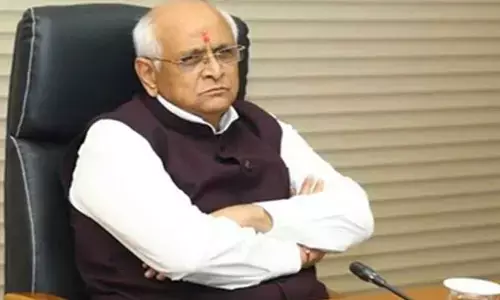Need to Accelerate India’s Green Hydrogen Mission

In line with India’s green vision, Prime Minister Narendra Modi on February 28 virtually launched India’s first indigenously-developed and built hydrogen fuel cell ferry at Cochin Shipyard
In line with India’s green vision, Prime Minister Narendra Modi on February 28 virtually launched India’s first indigenously-developed and built hydrogen fuel cell ferry at Cochin Shipyard. This key milestone of developing a hydrogen-powered ferry aligns with India’s National Green Hydrogen Mission. Launched on 4th January 2023, it lays out vision and aims for the government to position India as a global leader in the production, usage, and export of green hydrogen and its derivatives. In India, Hydrogen already finds use in industries as feedstock in ammonia-based fertilizers, petrochemicals, plastics, synthetic fibrers. Now, it is finding greater use as backup energy source, particularly for renewable energy plants.
Why hydrogen? A clear fuel, it helps decarbonise industries, aviation and shipping sectors. The maritime sector accounts for about 3% of global CO2 emissions. Recourse to hydrogen is also part of India’s commitment to the goal set by the 28th annual United Nations Climate Change Conference, or COP28, to “transition away from fossil fuels”. When consumed in a fuel cell, hydrogen produces only water. It has emerged an attractive fuel option for transportation and electricity generation applications. Common methods now in use to produce hydrogen are natural gas reforming (a thermal process), and electrolysis. Other methods include solar-driven and biological processes.
In India, hydrogen already finds use in industries as feedstock in ammonia-based fertilizers, petrochemicals, plastics, synthetic fibrers. Now, it is finding greater use as backup energy source, particularly for renewable energy plants.
Closer home, in Telugu states, as part of energy transition effors, NTPC Green Energy Limited (NGEL) has signed a pact with AP Industrial Infrastructure Corporation for setting up an Integrated Green Hydrogen Hub in about 1,200 acres near Pudimadaka village in Atchutapurammandal in Visakhapatnam district.The hub will have India’s largest green hydrogen production facility, capable of producing 1,200 tonnes per day. In Telangana, Singareni Collieries Company Limited is making efforts to use green hydrogen to run the 1200 MW Singareni Thermal Power Plant at Jaipur in Mancherial district. In Hyderabad, HMWSSB has plans to set up to set up a green hydrogen plant with a 160 mw capacity at Amberpet STP.
The Hydrogen Mission aims to make the country a global hub for green hydrogen. The Narendra Modi government approved the mission with an outlay of ₹19,744 crore for the period 2023-30. Its targets are: Energy independence by 2047; net zero by 2070, touch/cross 5 million mt green hydrogen production annually by 2030; Renewable energy capacity at 125 gw by 2030. If moneys are spent and efforts put in as per plans, the mission can be expected to produce 6 lakh jobs by 2030.
A sore point, though, is that India is having to step up production of fossil fuels to meet the spiralling demand for electricity to power its economic growth.Fossil fuels, mainly coal, will continue to make up 75 per cent of India’s power supply. India, however, is simultaneously pushing for 50 GW of renewable capacity addition a year to reach 500 GW green capacity by 2030.
Wall Street Journal cites a new forecast by McKinsey of a fivefold rise in hydrogen demand to 600 million metric tons a year by 2050, if climate change is limited to 1.5 degree Celsius. On current trajectories, however, that supply could be between 175 million to 291 million metric tons a year if steps aren’t taken to speed up permitting and lower both equipment and investment costs. To usher in a hydrogen economy, India is planning big, but actual commitments will be seen in financing. The country is targeting to produce 5 million tons of Green Hydrogen by 2030. So, it needs to step up as well as speed up its green efforts.











